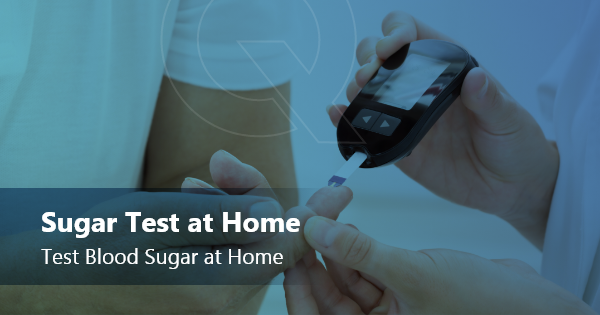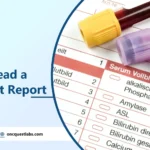Monitoring your blood sugar levels at home is a crucial part of managing diabetes or understanding your overall health. Whether you have diabetes or are simply curious about your blood sugar levels, performing a sugar test at home can provide valuable insights. In this blog, we’ll guide you through the process of testing your blood sugar at home.
Contents
Why Test Your Blood Sugar at Home?
1. Diabetes Management: If you have diabetes, regularly monitoring your blood sugar levels is essential for keeping your condition in check. It helps you make informed decisions about insulin or medication dosage, diet, and lifestyle.
2. Health Awareness: Even if you don’t have diabetes, testing your blood sugar can offer insights into your overall health. It can help you identify potential issues early and make necessary adjustments to your lifestyle.
3. Weight Management: Understanding how different foods affect your blood sugar can aid in weight management and making healthier dietary choices.
What You’ll Need
Before you start, gather the necessary supplies:
1. Blood glucose meter
2. Test strips
3. Lancet device (to prick your finger)
4. Alcohol swabs
5. Cotton balls or tissue
6. A notebook or diabetes log to record your readings
Steps to Test Your Blood Sugar at Home
1. Prepare: Wash your hands with soap and warm water. This ensures that your hands are clean and free of any substances that could affect the reading.
2. Insert a Test Strip: Insert a fresh test strip into your blood glucose meter. Most meters will turn on automatically when you insert the strip.
3. Prick Your Finger: Use the lancet device to prick the side of your fingertip. This should be relatively painless. A small drop of blood will form.
4. Apply Blood to the Test Strip: Touch the drop of blood to the end of the test strip. Be careful not to smudge or contaminate the sample.
5. Wait for the Reading: The meter will display your blood sugar level within a few seconds. Record the reading in your notebook or diabetes log.
6. Dispose of the Lancet and Test Strip: Safely dispose of the used lancet and test strip in a sharps container.
7. Clean Up: Use an alcohol swab to clean the puncture site on your finger.
8. Interpret the Results: Understand what your blood sugar reading means. Generally, normal fasting blood sugar levels range from 70-100 mg/dL, but consult your healthcare provider for personalized targets.
9. Take Action: Depending on your results, take appropriate action, such as adjusting your diet, taking medications as prescribed, or seeking medical advice.
Testing Frequency
The frequency of testing depends on your health status and your doctor’s recommendations. Some people with diabetes may need to test multiple times a day, while others may need less frequent testing.
Conclusion
Testing your blood sugar at home is a simple yet powerful tool for managing diabetes and promoting overall health. It empowers you to make informed decisions about your lifestyle, diet, and medication. Remember to consult with your healthcare provider to establish your specific blood sugar target ranges and testing frequency, and always follow their guidance. By taking control of your blood sugar, you’re taking control of your health.
Frequently asked Questions
Q1:Can I test my blood sugar at home to see if I have diabetes?
A1:A home testing kit’s finger prick test can indicate elevated blood sugar levels but cannot definitively diagnose diabetes. A standard blood test, on the other hand, can both confirm the absence of diabetes and provide a diagnosis or risk assessment for type 2 diabetes.
Q2:Is 200 blood sugar normal after eating?
A2:The results of an oral glucose tolerance test are assessed as follows:
– If the blood sugar level is below 140 mg/dL (7.8 mmol/L) after two hours, it is considered within the healthy range.
– A reading between 140 to 199 mg/dL (7.8 mmol/L to 11.0 mmol/L) is indicative of prediabetes.
– A measurement of 200 mg/dL (11.1 mmol/L) or higher after two hours indicates the presence of diabetes.




![Blood Test for Hair Loss [Male/Female] Blood Test for Hair Loss](https://oncquest-blog.s3.ap-south-1.amazonaws.com/blog/wp-content/uploads/2023/12/12044200/Blood-Test-for-Hair-Loss.webp)
